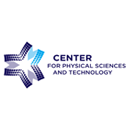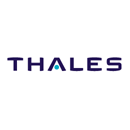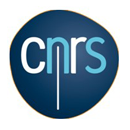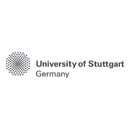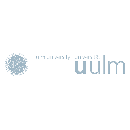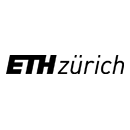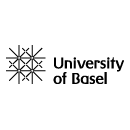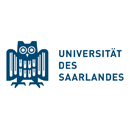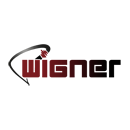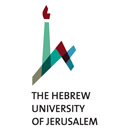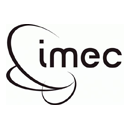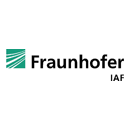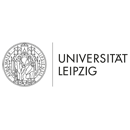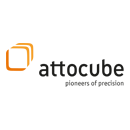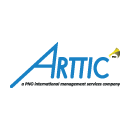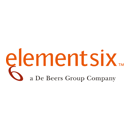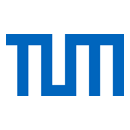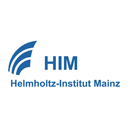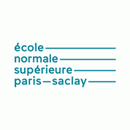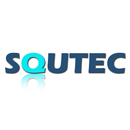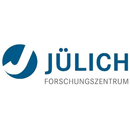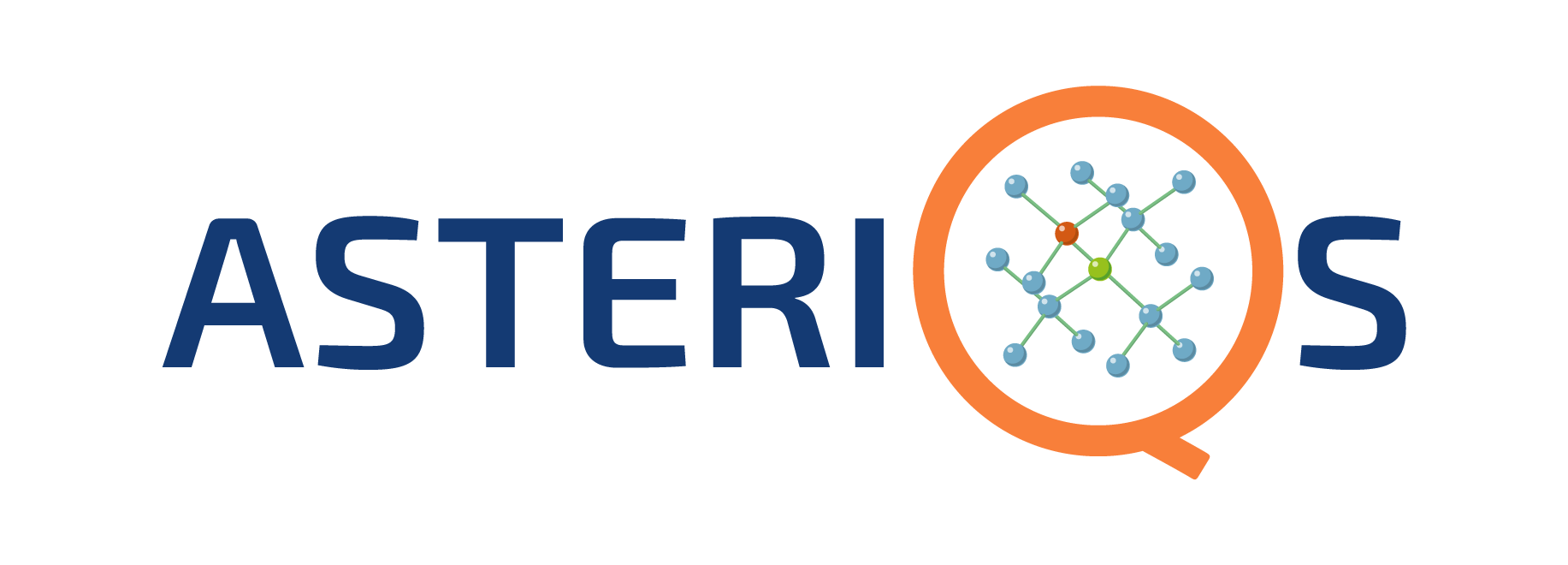ASTERIQS Partners
23 Partners
The ASTERIQS consortium brings together 23 partners from 8 different countries including industrial organisations, SMEs and research organisations.
THALES
Partner presentation
Thales Research & Technology-France (TRT-Fr), located in Palaiseau near Paris, is the main multidisciplinary research unit of the Thales group, a company formed by 64000 employees in over 52 countries and one of the major world players in aerospace (avionics, radar, communications), space (designing, developing and deploying orbital infrastructure), defence (radar, radio communications), and security (electronic transactions, cybersecurity) with a 15 Billion € revenue, whose 750 million € are reinvested in its own R&D activity. Thales Research & Technology-France has strong scientific links with industries and universities, either in France or internationally. Its specificity is to cover a broad range of research fields such as semiconductors, optics, spintronics, etc, having in mind the possible application of this research to future Thales products. The research activity in TRTFr is thus realized in a close collaboration with the Thales Group Business Units. In particular, the Physics Research Group has developed a strong expertise on NV centres in diamond and already has ongoing collaborations with partners of the ASTERIQS proposal within the FP7 DIADEMS project, coordinated by TRT-Fr, and also within the starting research projects MICROSENS (QuantERA) and QSA (CSA).
THALES, France
Role in project
Based on its experience of European projects, including the successful coordination of the FP7 project DIADEMS, THALES coordinates the ASTERIQS project. THALES is work-package leader in charge of the dissemination, collaboration, exploitation (WP8) and project management (WP9), in addition to its technical activities.
Key Personnel
Dr. Thierry Debuisschert , Senior scientist, Coordinator of the ASTERIQS project
He also coordinated the Integrated Project DIADEMS until end 2017. This project gathered 15 Partners among the prominent European laboratories and industries involved in the development of NV centre-based magnetometers.
He is chair of the Science and Engineering Board which coordinates the collaboration between the Quantum Flagship Projects.
Ludovic MAYER, Junior research engineer
Partner presentation
Founded in 1939, the Centre National de la Recherche Scientifique (The French National Centre for Scientific Research) is a government-funded research organization under the administrative authority of France’s Ministry of Research. Its 10 specialized institutes cover all scientific disciplines, from the humanities and social sciences to biological sciences, nuclear and particle physics, information sciences, nuclear and particle physics, mathematical sciences, chemistry, earth sciences and astronomy, ecology and the environment. CNRS is organized in 1211 laboratories, either intramural or in partnership with universities, other research organizations or industry. CNRS has 20 Nobel Prize laureates, 12 Fields Medal winners and other high qualified employees. CNRS’ research units are spread throughout France, and employ a large body of permanent researchers, engineers, technicians, and administrative staff. The CNRS annual budget represents one-quarter of French public spending on civilian research. CNRS will participate in ASTERIQS through three laboratories:
- CNRS – L2C (Laboratoire Charles Coulomb)
- CNRS – IRCP (Institut de Recherche de Chimie Paris)
- CNRS – LSPM (Laboratoire des Sciences des Procédés et des Matériaux)
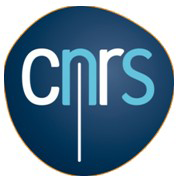
Role in project & Key Personnel
CNRS – L2C (CNRS – L2C – FR)
Laboratoire Charles Coulomb (CNRS-L2C) is a CNRS unit associated to Université de Montpellier. The laboratory gathers 226 researchers, engineers and technicians, with a very strong tradition of research in modern condensed and soft matter physics. CNRS-L2C participates with the team of Vincent Jacques, who has pioneered applications of scanning-NV magnetometry in condensed matter physics. His team gathers currently 4 senior co-workers (postdoctoral or senior scientist level) and 5 PhD students. Hosting two fully operational NV-based scanning magnetometers working at room and low (4K) temperatures, it takes advantage of the full capabilities of this imaging technique to explore and harness various current issues in modern nanomagnetism. These include domains walls dynamics as well as exotic spin textures featuring periodic orders (spin spirals, magnetic vortices or skyrmions) in insulating oxides or ultrathin multilayer stackings, with promising spin-offs in spintronics. The team currently extends the functionality of the NVbased probes to thermal sensing.
Vincent JACQUES, Research scientist (chargé de recherche) at CNRS
Isabelle ROBERT-PHILIP, Research director (directrice de recherche) at CNRS
CNRS – IRCP (CNRS – IRCP – FR)
IRCP (Institut de Recherche de Chimie Paris) is one of the major chemistry laboratories in Paris region. It has in particular extensive experience in the design, growth, characterization and modeling of bulk or nanoscale crystals, doped with impurities like rare earth ions, for applications in photonics, including optical quantum technologies. IRCP performs structural characterization by XRD, electron microscopy, Raman spectroscopy, as well as high resolution and coherent optical spectroscopy and optically detected magnetic resonance. Recent highlights include the observation of optical homogeneous linewidths under 100 kHz and spin T2 of several milliseconds in nanocrystals, electrical control of nuclear coherences in bulk crystals [3], as well as light matter teleportation. State-of-the-art samples have been produced for quantum information applications within several EU projects (Qurep, CIPRIS). The group is currently coordinating the H2020 FET Open project NanOQTech devoted to nanoscalesystems for optical quantum technologies.
Alexandre TALLAIRE, Research scientist
Philippe Goldner, Senior researcher
Diana Serrano, Research scientist
CNRS-LSPM (CNRS – LSPM – FR)
CNRS-LSPM (Laboratoire des Sciences des Procédés et des Matériaux) is mainly involved in several tasks of the WP1 related to material. In T2.2, the role of the lab is to improve the creation yield of NV centre by coupling the use of alternative gas source and post-treatments such as He+ ion bombardment that have been optimized in house. In T2.6, CNRS-LSPM engineers thin nitrogen-doped diamond films onto diamond complex geometry as anvil cells to bring new functionalities to this high-pressure system. CNRS-LSPM is also involved in T2.7 to optimise a newly developed method to grow diamond nanoparticles by PECVD including NV doping. Finally, in T2.9, CNRS-LSPM is in charge of the growth of specific samples on specific orientation as (111) or (113) orientations allowing reaching preferential orientation of NVs centres.
Jocelyn Achard, Professor at University Paris 13
Ovidiu Brinza, Research engineer
UNIVERSITY STUTTGART
Partner presentation
The USTUTT group started a decade ago to work on solid state quantum spintronics and quantum optics as well as metrology and biophotonics. The group comprises 5 senior scientists, 10 PostDocs and 20 PhD students. Major research areas are diamond-based quantum technology including magnetic and electric field sensing as well as design and application of photonic and plasmonic nano- and microstructures. Rare earth quantum structures are used for quantum spintronics as well as biophotonics. Among others the work is supported by an ERC Advanced Grant which started in 2017.
The Stuttgart group has pioneered the field of solidstate spin physics most notably diamond spintronics and sensing geared towards quantum applications in diamond as well as novel sensing application of diamond defects is such diverse areas as medical diagnostics or fundamental tests of quantum physics. Starting from the first successful observation of single defects, the group demonstrate quantum operations in single defects and bring together materials scientists as well as quantum physicist to work on engineering quantum grade diamond material and structures. The group pioneered the field of nanodiamond application is sensing and bio labeling applications. The achievements represent milestones in demonstrating stable defect fluorescence for small doped nanodiamonds and combining optical microscopy with techniques known from magnetic resonance imaging to demonstrate ultraprecise location of defect centres.
In the past years, the group has gathered considerable expertise in quantum nano sensing using spin defects. Also, the applicants group has gathered considerable knowledge in defect engineering and materials surface preparation. The applicant also has expertise in biophysics and single molecule spectroscopy, required for the present project.
.
Role in project
In WP3, USTUTT takes advantage of our micro- and nanofabrication facilities. They fabricate solid immersion lenses directly on diamond using photolithography, chemical reflow of the photoresist and reactive ion etching. This will increase the number of collected photons from single NV centres and small, localised ensembles. Since the fabrication process is scalable, it is of particular interest for commercial applications.
In WP5, USTUTT develops a new sensing functionality for robust and accurate electric field sensing with solid state spin ensembles. USTUTT tailors the spin Hamiltonian via proper magnetic field adjustment to map out the ac electric field strength and polarization. For high precision measurements, classical lock-in detection with aspects from quantum phase estimation are combined for effective suppression of technical noise.
USTUTT further demonstrates quantum-enabled thermal sensing by use of NV centres. Backing on promising proofs of- concepts that have sparked increasing interest worldwide, ASTERIQS pushes the performances of diamond based thermal sensors to unprecedented sensitivities in the 10 μK/Hz1/2 range combined with sub-10 nm spatial resolution.
In WP6, USTUTT receives a sensor for caspase 8- activity from the Institute of Organic Chemistry and Biochemistry of the CAS (Czech Rep), which is an advance of the pH and redox potential sensor, which was already studied at USTUTT. USTUTT first characterizes this sensor in vitro by doing T1 measurements in the presence or absence of caspase 8. Control measurements are done with a non-cleavable analogue of the sensor.
Afterwards the plan is to introduce the sensor into mammalian cells, track the particles and do the T1 measurements in vivo. After the sensor is well characterized, USTUTT plans to induce apoptosis to detect caspase 8- activity with the sensor. This sensor will be – after its optimization- a prototype for the development of other sensors.
In WP7, USTUTT performs scanning NV magnetometry to investigate new nanoscale magnetic phenomena such as spin-liquids in RuCl3 and current distribution in WTe2.
Key Personnel
Prof. Dr. Jörg Wrachtrup, Institute Director
Dr. Rainer Stöhr
Dr. Andrea Zappe, research assistant
UNIVERSITAET ULM
Partner presentation
UULM is a hub of quantum science and technology. The university has 5 institutes centred on quantum science, and also has a research hospital and leading medical research centre. The university has an outstanding track record of attracting leading researchers in quantum science. It has developed strong collaborations with other quantum centres through Transregional collaborative research centres and the IQST. UULM also has strong industry ties through the science park at the university, as an example of the industrial focus, teams at UULM have founded a start-up company NVISION focussed on translating quantum science into commercial applications. The UULM will include two independent quantum groups associated with:
- Institute of Quantum Optics (Institute director Fedor Jelezko).
- Institute of Theoretical Physics (Institute director Martin Plenio)
Institute of Quantum Optics
The Institute of Quantum Optics (IQO) is led by Fedor Jelezko, who holds the newly established Chair for experimental quantum optics at Ulm University. The team of IQO has extensive experience in solid state quantum physics (including optical detection of single quantum systems in solid, coherent control techniques, optical spectroscopy and magnetic resonance) and sensing using spins in diamond. Due to the significant expertise in control and applications of single quantum systems in diamond, the group has become a focal point for researchers around the world, interested in performing quantum metrology and quantum information experiments. IQO actively collaborates with leading researchers in quantum physics, sensing and biophysics.
Institute of Theoretical Physics
The Institute of Theoretical Physics (ITP) is led by Prof. Martin Plenio who is Alexander von Humboldt Professor and holds the Chair for Theoretical Physics at Ulm University. He and his team have extensive experience in the theory of entanglement and the understanding of interacting quantum many body system and of the exploitation of such quantum systems for quantum information processing, quantum simulation and quantum sensing with atoms, ions, photons and colour centres in diamond. They have introduced dynamical decoupling techniques to NV-centres in diamond, signal processing methods for information extraction from noisy signals, hyperpolarisation methods for nuclei based on NV-centres in diamond and have designed schemes for quantum simulators and quantum sensing employing NV-centres in diamond. The ITP actively collaborates with leading researchers in quantum physics, sensing, quantum information and biophysics.
Role in project & Key Personnel
Institute of Quantum Optics
The experimental team of IQO performs ASTERIQS’s cutting-edge research on diamond quantum enhanced sensing. It contributes to core activities in all WPs, and it leads WP6 on Bio-applications and healthcare. IQO’s contribution to WP6 leverages their significant collaborations with biology teams at UULM (Prof. Kirchhoff) and close ties to the university medical centre and research hospital, in addition to soon to be constructed BioQ building focussing on quantum devices and biology. For WP1 IQO provides critical feedback on implementation of the theoretical techniques. IQO gives experimental input to the performance of the theory toolkit for diamond sensing. In WP2 IQO characterizes diamond material in sense of measuring the coherence time of spins in diamond. IQO also determines the coherence time as a function of the material surface properties. In WP3 IQO collaborates with IMEC on improving photocurrent detected magnetic resonance. In WP4 single molecule confocal microscopes already existing at IQO are used for performing nanoscale NMR spectroscopy. Expertise of IQO is used in simplifying and miniaturizing the experimental configuration. In WP5 IQO uses custom designed diamond anvil cells in coordination with high numerical aperture microscopy to measure magnetic fields under high pressure. In WP6 IQO modifies existing magnetometry setups to perform NMR spectroscopy on biomolecules. Currently the setups are not enclosed, and solutions are prone to evaporation. IQO functionalise the diamond surface with ligand using techniques developed in collaboration with Prof. Tania Weil, and encloses the diamond surface to ensure stability. Specially designed magnetic shielding rooms with high temperature stability are used in performing high resolution NMR spectroscopy.
Fedor Jelezko, Full Professor and Director of the Institute of Quantum Optics and Department of Physics, Ulm
Liam McGuinness, Postdoctoral researcher, Institute of Quantum Optics
Ressa Said, Postodoctoral reasearcher, Institute of Quantum Optics
Yuliya Mindarava, PhD stud
Institute of Theoretical Physics
The group contributes to WP1 (Theory and protocols) and WP6 (Bio-applications and healthcare) where it is responsible for the further development of dynamical decoupling schemes, their integration with sensing schemes and the use of error corrections methods in sensing protocols. Furthermore, the group provides theory support to all experimental WPs.
Prof. Dr. Martin B. Plenio, Professor of Theoretical Physics and Director of the Institute of Theoretical Physics at Ulm University.
Dr. Zhenyu Wang, Senior postdoc
EIDGENOESSISCHE TECHNISCHE HOCHSCHULE ZUERICH
Partner presentation
ETH Zurich (www.ethz.ch) has come to symbolise excellent education, ground-breaking basic research and applied results that are beneficial for society as a whole. Founded in 1855, it today offers researchers an inspiring environment and students a comprehensive education as one of the leading international universities for technology and the natural sciences.
ETH Zurich has more than 17,000 students from approximately 80 countries, 3,700 of whom are doctoral candidates. More than 400 professors teach and conduct research in the areas of engineering, architecture, mathematics, natural sciences, system-oriented sciences, and management and social sciences.
ETH Zurich regularly appears at the top of international rankings as one of the best universities in the world. 21 Nobel Laureates have studied, taught or conducted research at ETH Zurich, underlining the excellent reputation of the institute. Transferring its knowledge to the private sector and society at large is one of ETH Zurich’s primary concerns.
SPIN PHYSICS GROUP (DEGEN GROUP)
The Spin Physics group (www.spin.ethz.ch) headed by Prof. Christian Degen has been established in 2009 at the Massachusetts Institute of Technology and has moved to the Department of Physics at ETH Zurich in 2011.
The lab pioneers new scanning probe technologies for detecting and imaging weak magnetic fields with nanometer spatial resolution. The lab has deep expertise in scanning probe instrumentation, spin manipulation, and nanofabrication. A specialty of the lab’s effort is the interdisciplinary approach, with expertise in the nanosciences, quantum physics, materials science, and surface chemistry.
Notable research milestones include the demonstration of nanoscale MRI on a single virus particle in 2008, the initial proposal of diamond-based magnetometry in 2008, the development of many spectroscopic techniques in quantum sensing and NMR from 2014-2017, and the imaging of currents flowing through individual carbon nanotubes at <30 nm resolution in 2017.
In 2018, the Spin Physics group founded the quantum spin-off company QZabre LLC, a pioneer and leading provider of integrated NV center nanoprobes.
.
Role in project
The Spin Physics group contributes to WP5, WP6 and WP7. The group participates in the development of novel sensing protocols and functionalities for NV centres (T5.4) by implementing novel quantum manipulation protocols. The group leads the task on nanoscale magnetic resonance detection and imaging protocols (T6.1), which develops the key conceptual ingredients needed to advance nanoscale NMR towards applications to single biomolecules. The group further applies these techniques to the nanoscale protein structural analysis using NMR spectroscopy. In WP7, it leads the task on nanoscale current imaging (T7.4), where the group will demonstrate spatial imaging of current flow in graphene devices by using a sensitive detection of AC currents based on quantum state manipulation techniques developed in WP5. Beside WP5-7, the group also supports diamond probe fabrication (T2.3) and an industrial scanning magnetometry solution (T4.3) through its spin-off company QZabre LLC.
Key Personnel
Prof. Christian Degen, Tenured associate professor at the Department of Physics of ETH
UNIVERSITAT BASEL
Partner presentation
The University of Basel is Switzerland’s oldest University and hosts seven faculties and over 70 institutes. The UNIBAS node consists the quantum sensing group headed by Prof. Patrick Maletinsky. The group is part of the University’s Department of Physics, which has a strong focus on quantum science and technology as well as on nanophysics. The Department is home to several major research centres in these fields: The National Competence Centre of Research (NCCR) in Quantum Science and Technology (University of Basel: co-Leading House, ETH Zurich: Leading House), the Basel QC2 Centre for Quantum Computation and Quantum Coherence, the Swiss Nanoscience Institute (SNI), and the NCCR Nanoscale Science (University of Basel: Leading House). The quantum sensing group has a proven track record in quantum sensing with single NV spins, with a particular focus on nanoscale, scanning-probe quantum sensing. The group has extensive expertise in diamond nanofabrication, scanning probe NV magnetometry, coherent manipulation of single NV spins and quantum optical methods.
Role in project
The UNIBAS quantum sensing group is leading WP5 on novel quantum sensing functionalities and contributes to ASTERIQS through research, dissemination and technology transfer. With its research, UNIBAS contributes to several aspects of ASTERIQS, most notably on nanofabrication and diamond materials engineering for sensing technologies (e.g. single-crystalline diamond sensing devices such as all-diamond scanning probes, cantilevers etc.) and on scientific applications of NV magnetometry to condensed matter systems. The Quantum Seninsg Lab contributes with their operational scanning NV magnetometers with proven performance (one room temperature [Appel2015, Appel2016] and two cryogenic ones operating at 4K [Thiel2016] and mK temperatures, respectively) to this research.
UNIBAS has a strong track record in disseminating their results in high impact publications, invited talks and seminars and will continue such dissemination activities within ASTERIQS. Furthermore, public outreach plays and important role in their dissemination activities; Prof. Maletinsky in the past has held various talks to various public and industrial audiences, where he actively advertised the quantum technologies, he and the previous DIADEMS project developed. Such dissemination activities are also actively pursued within ASTERIQS.
Key Personnel
Patrick Maletinsky, Associate professor at the University of Basel,
Brendan Shields, Postodoctoral assistant
UNIVERSITÄT DES SAARLANDES
Partner presentation
The Quantum Optics group at the physics department of Saarland University (USAAR) has been founded in 2005. The scientific environment at the physics department in particular comprises 6 groups working in the field of quantum technologies. The quantum optics group has demonstrated experience in the fields of spectroscopy, quantum optics, quantum sensing and cavity quantum electrodynamics with colour centres in diamond and single photon nonlinear optics. Current research is focused on efficient narrow-band single photon sources at roomtemperature; generation and optical spectroscopy of novel colour centres in diamond; fabrication of diamond nanocrystals for efficient photon collection; coupling of colour centres to optical micro-cavities for enhanced singlephoton emission and realization of atom-photon-interfaces; design, fabrication and investigation of photonic crystal cavities in diamond; coherent all-optical control of spin states; and frequency conversion of single photons from the visible spectral range to the telecommunications band.
The group participates in several national and European research projects on quantum metrology, quantum sensing and quantum communication as well as on fundamental building blocks for these fields, e.g.:
- “Diamond Devices Enabled Metrology and Sensing (DIADEMS)”, EU, FP7.
- “Wavelength tunable advanced single photon sources (WASPS)”, EU, FP7.
- “Single-photon sources for quantum technologies (SIQUTE)”, EU, EMRP joint research proposal.
- “Mechanical and Opto-mechanical Interfaces for Single Color Centres in Diamond (FOR-1493)”, DFG, Germany.

Role in project
ASTERIQS project benefits from the group’s expertise in production and investigation of micro- and nanophotonic structures in diamond and investigation of novel color centres, in particular experience in the fields: room-temperature and cryogenic spectroscopy of single colour centres in diamond; efficient single photon sources based on colour centres in diamond; all-optical and microwave coherent single spin manipulation of single colour centres in diamond; fabrication of photonic crystal and open fiber-based cavities for colour centre coupling; employing microcavities to enhance magnetic sensing technologies. The Quantum Optics Group contributes to the project within WPs 3 and 5:
In WP3 USAAR leads task 3.3 and fabricate miniaturized, monolithic diamond cavities for enhancing the IR absorption on the NV centre singlet transition with the goal of realizing a compact magnetic field sensor with high contrast measurement signals. Here, the cavity consists of a heavily NV-doped diamond slab with polished side facets which allow for total-internal reflection of both pump and absorption light. Both light fields are evanescently coupled into the slab via a high-index coupling prism. One facet of the slab will feature a curved surface produced by microfabrication techniques to yield a stable cavity operation. USAAR investigates the samples and demonstrate evanescent coupling to the cavity and the magnetic field sensing capability of this approach. Further, USAAR develops, fabricates, and tests planar directional antennas based on a very thin diamond membrane embedded in metallic and dielectric thin films for broad-band, room-temperature enhancement of the emission and the collection of the fluorescence light. The spatial emission pattern might be designed to largely overlap with Gaussian modes, facilitating coupling to low-NA optics and optical fibers. USAAR will fabricate such antenna samples and will verify their operation and photon collection efficiency. For the latter approach, USAAR will closely collaborate with partners BOSCH and UNIBAS.
In WP5 USAAR contributes to task 5.1 with investigations of SiV centres for all-optical magnetometry in high magnetic fields of several tesla (with UNIBAS); measurements of pressure and magnetic fields in diamond anvil cells via all-optical methods using ensembles of SiV centres in diamond; and, together with E6, employing laser cutting and thinning to fabricate thin, strongly SiV-doped samples for pressure sensing as well as studies of spectroscopic properties of these SiV ensembles under high stress for sensing. For these investigations USAAR makes use of the fact that the electronic levels of SiV centres are strongly susceptible to external fields, temperature and local strain. Interestingly, the SiV’s spin degrees of freedom can be manipulated all-optically, without the need for microwave radiation. The centre of the SiV zero phonon line transition can be determined from spectroscopic measurements or based on coherent effects (e.g. spectral hole burning or coherent population trapping), which will be exploited here. As the SiV spin coherence time is limited by photon-driven transitions, high-sensitivity measurements are limited to ultra-low temperatures (~100 mK). An alternative system is color centres of similarly advantageous optical properties but larger ground state splitting suppressing the phononic decoherence effects, such as the recently discovered SnV centres. Consequently, within task 5.2 USAAR explores all-optical spin control and long spin coherence times of SnV centres with the aim of exploiting these for magnetic field and pressure sensing at elevated temperatures as compared to SiV centres (liquid He temperatures).
Key Personnel
Christoph Becher, Prof. Dr.
Christoph Becher, Prof. Dr., Head of the Quantum Optics group, USAAR.
Johannes Görlitz, PhD student
WIGNER RESEARCH CENTRE FOR PHYSICS
Partner presentation
Wigner Research Centre for Physics (WIGNER RCP) as an independent legal entity in the organizational framework of the Hungarian Academy of Sciences (HAS) – is one of the flagship organizations of the Hungarian Academy of Sciences’ research network and a key participant both in the national innovation system and European research cooperation. It is the leading centre of its kind in Eastern Central Europe hosting with about 400 employees organised in ~40 research groups located at a campus with another 1000 employees in academic research and hitech spin-off companies. The research environment for the project is therefore unique.
WIGNER RCP deals with the following main research areas as research activities: Experimental and theoretical particle physics, nuclear physics, general theory of relativity and gravitation, fusion plasma physics, space physics, nuclear materials science, mainly in the Institute for Particle and Nuclear Physics; Experimental and theoretical solid-state physics, statistical physics, nuclear physics, optics, and materials sciences mainly in the Institute for Solid State Physics and Optics.
The Institute for Solid State Physics and Optics is devoted to conduct basic theoretical and experimental research in the fields of material structure analysis, magnetic properties, quantum correlated systems, quantum optics, and complex fluids. The Semiconductor Nanostructures Research Group lead by Prof. Dr. Adam Gali focuses its research on investigating solid state quantum bits by advanced simulation techniques, finding and developing new types of sensors and biomarkers by simulation and experimental techniques. Prof. Adam Gali’s theory group is a part of
Theoretical Solid-State Physics Department. This Department has a long tradition in many-body physics and electronic structure calculations in solids. Several groups already installed their computer clusters in Wigner RCP.
Wigner RCP has an excellent infrastructure for Adam Gali’s group doing atomistic simulations in diamond. Adam Gali’s group consists of total 14 senior and junior researchers where 3 of them are female.
Adam Gali is the leader of the National Quantum Technology Program in Hungary at Wigner RCP (started in November 2017) with 4M Euro total budget, and principal investigator in two QuantERA projects (Q-Imagine, Nanospin) starting in 2018 (~320k Euro budget).

Role in project
Contributor to WP1:
- characterization of the electrical readout of NV centre in diamond by means of advanced ab-initio methods
- characterization of novel colour centres in diamond for sensing by ab-initio methods
- numerical simulation of spinpolarization transfer from the electron spin of NV centre toward the nuclear spins of diamond or external species for enhanced sensing.
Key Personnel
Prof. Adam Gali, Research group leader at Wigner Research Centre for Physics, Institute for Solid State Physics and Optics, Hungarian Academy of Sciences, Associate professor (part time) at Budapest University of Technology and Economics
THE HEBREW UNIVERSITY OF JERUSALEM
Partner presentation
Since Its inception in 1918, the Hebrew University’s mission has been to develop cutting-edge research, to educate future leaders in all walks of life, and to nurture future generations of outstanding scientists and scholars in all fields of learning. The Hebrew University is ranked internationally among the 100 leading universities in the world and first among Israeli universities. This recognition confirms its reputation for excellence and its leading role in the scientific community. The University encourages interdisciplinary activities in Israel and overseas and serves as a bridge between academic research and its social and industrial applications.
The Hebrew University is world-renowned in the academic and scientific communities. It embodies excellence across the spectrum of academic disciplines: from the humanities, social sciences, and law, to natural sciences, life sciences, agriculture, computer sciences, engineering and medicine. The University is at the forefront in advancing interdisciplinary collaborations and technological innovation in Israel and abroad. Its highly regarded researchers are frequently sought out for international collaborations with other outstanding institutions.
The Hebrew University encourages creativity with an emphasis on training the next generation of researchers to thrive in the twenty-first century. Hebrew University alumni are equipped with tools for critical and analytical thinking and graduate with a competitive advantage in the job market and academia. Most Hebrew University students pursue a double major, and every year new programs are launched that incorporate multiple disciplines. These programs not only diversify and enrich the educational excellence of the University, but also push students to think creatively and cultivate their ability to have a macro-level perspective.
The Hebrew University is a Centre for innovative research in every academic discipline. The ideas, inventions, and developments that have come out of the University’s labs and research centres have benefited academia and humanity around the globe. The University’s technology transfer company, Yissum, is rated among the top 15 tech transfer companies worldwide (in terms of revenues). Inventions that were developed at the University have produced some of the most well-known Israeli innovations in a broad range of areas: health, agriculture, computer sciences and environmental sciences.
The HUJI Research Group
Moreover, HUJI group is part of the quantum information Centre activities, which is a newly established Centre that is composed of 17 researchers. This is a multidisciplinary research Centre that includes researchers from physics, mathematics, engineering, computer science and chemistry. The Centre was established in order to increase the collaboration between researchers in different areas which is essential in this interdisciplinary field.
The quantum technology theory group at Racah institute, Jerusalem, led by Prof. Alex Retzker, consists of seven members, including one postdoc, 4 PhD students and one Master student. The group was established less than six years ago and by now it is fairly consolidated and shows diverse activity in the field of quantum optics mainly in trapped ions and NV centres. The main achievements of the group since it was established five years ago are: Novel Continuous dynamical decoupling schemes, which were realized both NV centres and trapped ions platforms and were proven to be extremely efficient. Construction of quantum sensing schemes, which are based on the continuous dynamical decoupling schemes. These schemes were realized with trapped ions and with NV centres showing record sensitivities for both platforms. Construction of error correction‐based sensing protocols. Design of high-resolution schemes based on Bayesian and statistical analysis. Construction of dynamical nuclear polarization schemes, which have resulted in a series of polarization experiments, which have an enormous amount of potential impact for medical application. The successful realization of these proposals has led to the foundation of a startup company, NVision, by Fedor Jelezko, Martin Plenio, Iai Schwarz and Alex Retzker.
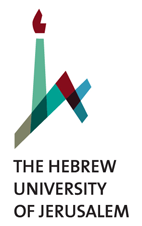
Role in project
The main role in the project is to develop new theoretical concepts for increased sensitivity and transform these concepts into detailed protocols that will enable to make further progress beyond the state of the art and reach NV-based commercial devices.
The protocols are analysed both analytically and numerically and optimised under realistic settings for the implementation of practical applications of quantum technological tasks. The work is done in close collaboration with the experimental members of the consortium, with the aim to adapt the schemes to the projects persuaded by the experimental groups and to provide a tight and on-going support for the experiments conducted in ASTERIQS.
Key Personnel
Prof. Alex Retzker, Head of the Quantum Technology Group at the Hebrew University
Dr. Nati Aharon, Postdoctoral researcher
INTERUNIVERSITAER MICRO-ELECTRONICA CENTRUM
Imec is the world-leading research and innovation hub in nanoelectronics and digital technologies. Imec research focuses on the next-generation of chips and systems, and on the enabling technologies for ambient intelligence. The combination of its widely acclaimed leadership in microchip technology and profound software and ICT expertise makes imec unique. By leveraging the world-class infrastructure and local and global ecosystem of partners across a multitude of industries, imec creates ground-breaking innovation in application domains such as healthcare, smart cities and mobility, logistics and manufacturing, and energy. Imec is devoted to becoming the leading industrial-directed research organisation in the field of quantum technology, collaborating with the main nano-electronics industries worldwide and aiming at developing quantum ecosystems for quantum computation and sensing.
IMOMEC department of imec focuses on the development and characterization of advanced materials, with potential use in micro- and nanoelectronics, bioelectronics and nanotechnology. Interdisciplinary research activities are carried out by material physicists, chemists and engineers, bridging the gap between fundamental research and technology development for industry. IMOMEC has full access to all imec facilities, including IC-links semiconductor manufacturing division of imec (https://www.imec-int.com/iclink) that is specialised in electronic chip engineering and device integration aimed at mass production. This includes chip packaging and reliability testing. The group of Prof. Nesladek is renowned for its world-pioneering contribution to the CVD diamond technology – an activity set in 1990 – with main focus on high quality diamond growth and doping for electronic and quantum applications. The IMOMEC group has recently discovered the photocurrent readout of NV centres spin state (PDMR), that is patented (J. Hruby et al., “Magnetometer Sensor with Negatively Charged Nitrogen-Vacancy Centres in Diamond“, US 15588214) and which will be used in ASTERIQS for development of compact ultrasensitive sensors. Work on CVD diamond was dealt in over 400+ papers in international journals from IMOMEC group.
IMOMEC has important experience in projects in the diamond field, including Marie Curie actions. Recently IMEC took part in FP7 projects from Bioelectronics to Energy field, including NV diamond projects. In particular,
IMOMEC has been or is involved in the following recent projects:
- Coordination of projects NMP MERIDAN and KBBE- DINAMO.
- FP7-ICT Grant No. 270197: DIAMANT – Diamond based atomic nanotechnologies, 2011 -2014.
- EU FP7 Grant No. 611143: DIADEMS – Diamond devices enabled metrology and sensing, 2013-2017.
- SBO (Funds for Scientific Research Flanders): DIAQUANT – Diamond Quantum Technologies, 2018 – 2022.
- Quantera – Eranet: Q-Magine, Scalable Electrically Read Diamond Spin Qubit Technology for Single Molecule
- Quantum Imagers, 2018 – 2021.
- Quantera – Eranet: NanoSpin – Spin-based nanolytics, 2018-2021.
Partner presentation

Role in project
The main contribution of IMEC is to develop an advanced prototype (TRL4) of compact and sensitive photoelectrically readout magnetic camera (WP4), based on the photoelectric detection of magnetic resonance (PDMR) – a method that IMEC has pioneered and developed during DIADEMS. Another objective of IMEC is to further enhance the performances of PDMR in terms of NV detection rate and magnetic resonance contrast. For this, IMEC further optimizes the PDMR protocols (WP5), engineer the CVD diamond growth and doping to produce high quality epitaxial diamond layers with properties optimized for PDMR (WP2) and develops full engineering solutions combining the photoelectric readout circuit with microwave antennas and enabling interfacing of the photoelectrically readout diamond chip with readout electronics (WP3). IMEC in addition contributes to the fabrication of diamond doped with novel defect centres that can be useful for quantum magnetometry.
Key Personnel
Prof. Milos Nesladek, Principal Scientist at IMEC and Strategic research manager of IMOMEC division of IMEC and Professor in Photonics at University of Hasselt
Dr. Emilie Bourgeois, Researcher at IMEC
FRAUNHOFER INSTITUTE
Partner presentation
The Fraunhofer Institute for Applied Solid State Physics (IAF) is a leading science and technology centre in the field of micro and nano-structured compound semiconductors and devices made from synthetic diamond. Research and development are focused on micro and optoelectronic circuits, modules and systems for applications in safety, security and communication systems as well as for medical applications and environmental protection. The institute features a cutting-edge semiconductor process line, thus being able to provide leading edge devices, circuits and modules with the highest functionalities as prototypes or in small quantities. Our national and international partners in research and technology are the Federal Ministry of Defence (BMVg), the Federal Ministry of Education and Research (BMBF), national state governments, the European Commission, and industrial enterprises. The Institute was founded in 1957 and now has a total staff of 280 scientists, engineers and technicians. Our annual budget amounts to 28 million €. The IAF is one of the 60 research institutes of the Fraunhofer-Gesellschaft and is member of the Fraunhofer Alliance for Microelectronics (VμE) and the Fraunhofer Alliance for Defence and Security
Research (VVS). The Diamond Research Department led by C.E. Nebel and consists of 25 members. The diamond laboratory is equipped with 10 plasma-enhanced CVD (PECVD) reactors (diamond growth), state of the art technology and characterization tools. The team has developed outstanding expertise in a) homoepitaxial growth of PECVD diamond, in b) diamond related technologies like polishing, cutting, etching, bonding, and in c) fabrication of IR windows and cooling systems from diamond for laser applications. The team growth utra-pure diamond, atomically flat diamond, isotopically enriched diamond and doped (boron- and phosphorus) as well as intrinsic diamond. It has developed a method to generate 3D diamond structures by growth.
Role in project
In this project IAF apply their diamond homoepitaxial technology to grow ultra-pure isotopically enriched diamond films. Focussed areas are nitrogen delta-doping of atomically flat (111) oriented diamond layers.
Optimization of high-density nitrogen doping (> 1018 cm-3) to improve the nitrogen (P1) to NV conversion. In addition, the bottom-up growth technique of diamond tips and of (111)-oriented surfaces on (100) substrates are implemented, optimized and characterized at IAF. To generate single crystalline diamond tips, IAF also applies oxygen based ICP etching for the fabrication of tips in the nano-meter regime with NV in the very tip for magnetometry. These tips are singulated by a laser cutting step and mounted on AFM cantilevers for application and characterization by their colleagues. The use of thin diamond plates in insulating layers (DoI technique) is explored applying newly developed wafer-bonding technology in combination with planar thinning. Aims are to realize planar opto-electronic NV-arrays for 2 and 3D sensing. Main device interests are the development of sensing system for navigation and spatially resolved current measurements to characterize integrated circuits.
Key Personnel
Christoph E. Nebel, Dr. rer. nat. habil, Dr. Ing. ,Head of Department Micro and Noanosensors
Christian Giese, Dr. rer. nat,
Verena Zürbig; Dr-Ing, Head of the research team „Diamond Homoepitaxy“and Deputy head of business unit “Diamond Devices” at the Fraunhofer Institute for Applied Solid State Physics, IAF.
UNIVERSITY LEIPZIG
Partner presentation
Leipzig University was founded in 1409 making it one of the oldest universities in Germany. It is an interdisciplinary, international comprehensive university. It consists of 14 faculties with 128 institutes. 35,000 persons research teach and study at the university and more than 4,300 persons that are employed at the University Hospital of Leipzig.
Leipzig University has been placed as the best university in the New Laender and among the top 25 in Germany in the fourth consecutive year (by the Shanghai Ranking).
DEPARTMENT OF PHYSICS AND EARTH SCIENCES – NUCLEAR SOLID-STATE PHYSICS
The accelerator Lab in Leipzig operates three linear ion accelerators and provides all types of ions with kinetic energies between a few hundreds eV and several MeV. The lab is equipped with a semiconductor lab as well as several analytic methods. We developed special techniques to implant single ions with nm lateral resolution e.g. to produce shallow NV centres in diamond bulk materials or nano-clusters. The lab is associated with the IOM Leipzig institute and has admission to a 10 MeV electron accelerator. This provides an increase of the NV production yield.

Role in project
ULEI performs the implantation of all ion species in an energy range between a few eV to several MeV. ULEI provides a large number of material science techniques like plasma etching, ion beam analytics, annealing procedure and surface modification. ULEI performs quality test methods and try to install new specifications for a standardization of quantum materials. At least, ULEI is responsible for the production of color centres especially the NV centres with high lateral resolution. One goal is to investigate the mechanism of NV creation and their optimization in order to create NV centres deterministically.
Key Personnel
Jan Meijer, Chair of the nuclear solid-state physics at the University Leipzig
Sébastien Pezzagna, Research associate
ATTOCUBE SYSTEMS AG
Partner presentation
Attocube systems is the partner of choice for research laboratories and Original Equipment Manufacturer (OEM) customers all over the world. The close cooperation with the scientific community is the foundation for its success. It creates unique synergies of pioneering ideas and turns them into products perfectly tailored to the requirements of today’s challenges in the nanotechnology world. The product portfolio comprises integrated system solutions as well as single components for use in industry and science. It has four main business-lines:
- MICROSCOPY: with complete instruments for nano-characterization of surfaces & bulk materials at low temperatures & high magnetic fields but also at room temperatures.
- NANOMOTION: Piezo-based nanopositioners for research & industry applications suitable for ambient to extreme environments.
- CRYOGENICS: ultra-low vibration liquid or closed cycle cryostats, optimized for most sensitive measurement techniques at variable temperature & high magnetic field.
- NANO SENSING: Ultra precise laser interferometric sensors for real-time displacement and vibration measurement with picometer resolution and long-range displacement.
Today, the company and its daughter company Neaspec employs around 140 people with tw- third of them are expert scientists and engineers, technical staff. The group has an annual sales volume of about 30 Mio. € .
Most of the technology behind the products is proprietary and protected by a diversified portfolio of original patents. In the FP7 DIADEMS project attocube contributed in designing a robust platform combining AFM and confocal microscopy to operate in cryogenic and magnetic field environment adapted for NV centres magnetic sensing and magnetic landscape imaging. Researcher have by now developed various measurement protocols for magnetic sensing. Other than the FP/ DIADEMS project attocube was involved in 3 past ITNs also in FP7 succesfully training 4 young researcher. Currently attocube is involved in two ITNs (Spin Nano and 4Photon) with activities on high resolution spectroscopy of transition metal dichalcogenides MDs as well as novel semiconductor quantum dot systems.

Role in project
In ASTERIQS with a focus within WP4, attocube is planning to design build and commercialize a complete NVmagnetic sensing imager based on all the recent and forthcoming developments in quantum sensing protocols based on NV-centres in Diamond. The work can only be performed in collaboration with the teams of this consortium, namely University Stuttgart, Basel, Zurich, Ulm and CNRS to site the ones developed and optimized the various microwave-based measurements protocols.
Key Personnel
Prof. Khaled Karrai, Scientific Director attocube systems AG
Dr. Claudio Dal Savio, Senior scientist in the innovation group of attocube
ARTTIC
Partner presentation
ARTTIC assists clients from all business and research sectors, small and large, private and public, to ensure the success of their collaborative research & innovation ventures. During close to 32 years of success, ARTTIC developed and demonstrated expertise in the set-up and management of to date 400 large-scale ambitious projects of which 96 were successful under H2020 calls. Based on its long-standing experience in a range of funding programmes across scientific and technological domains, ARTTIC helps clients to move from strategic plans to effective competitive research and development of innovative solutions, resulting in successful applications and businesses. ARTTIC is a company of the PNO Consultants group, the European leader for consultancy in innovation and funding.
The company has been successfully managing large scale RDI projects, including more than 250 major RDI projects and networks during H2020 and previous framework programmes. ARTTIC staff has extensive experience and knowledge in various RDI fields among which ICT, Transport, Health, NMP, Security.
In the field of Quantum technologies, ARTTIC is involved in two FP7 projects – DIADEMS and HYPERDIAMOND – in charge of the management support and dissemination.
.

ARTTIC, France
Role in project
ARTTIC is in charge of the project management office. ARTTIC provides methods and tools to support the collaboration within the consortium and to manage the project.
ARTTIC supports the consortium in the daily administrative and contractual tasks to ensure that the collaboration is efficient, the project is properly monitored, and decisions and actions are prepared and taken according to the project progress and contractual obligations. An important aspect of the role of ARTTIC is also to simplify as much as possible the contractual work requested from the researchers and to develop a collaborative spirit inside the consortium.
In addition, ARTTIC supports the development of the Communication & Dissemination Strategy, collaboration with other European and international initiatives, organisation of the planned workshops and summer schools, handling media relations, preparing the project dissemination printed material and facilitating exploitation planning.
Key Personnel
Emmanuelle Da Silva, Senior Consultant
Valérie Mellier, Consultant
Nora Ouadi, Project Manager
ELEMENT SIX (UK) LIMITED
Partner presentation
Element Six (E6) was formed in 1947 to address the industrial market for machining with natural diamond. Since then E6 has become a world leader in the production of all forms of man-made diamond for industrial applications and has pioneered the development of Chemical Vapour Deposition (CVD) diamond synthesis technology and materials since the 1980s. E6 are currently a leading supplier of single crystal and polycrystalline CVD diamond products (examples include laser exit windows, cutting tools, domed diamond for use in high-end speakers, windows for high-power gyrotrons, heat-spreaders for electronic devices and high-purity electronic-grade diamond). In conjunction with E6’s facilities that manufacture these products they also have a diamond innovation site (unparalleled in size) based in Harwell, UK where their R&D efforts are concentrated. This site will be the base for their contribution to ASTERIQS.
E6 have a track record in working with world-leading academic groups progressing quantum applications in diamond. During these collaborative efforts quantum-grade diamond has been developed and this has enabled state-of-the-art room-temperature coherence times to be achieved for solid-state qubits.

Role in project
E6 provides key material to the consortium including the ultra-high purity (<5 ppb N) thin plates (<30 μm) which provides a critical backbone to the consortium success. Isotopically purified diamond (99.999%) with a low impurity concentration (<5ppb N) as well as material with engineered dislocations (<103 cm-2).
Key Personnel
Dr. Matthew Markham, Principal Research Scientist
Dr. Andrew Edmonds, Senior Research Scientist
Pierre-Olivier Colard, Assistant Research Scientist
ROBERT BOSCH GMBH
Partner presentation
The Bosch Group is a leading global supplier of technology and services. In 2017 390,000 associates generated sales of 77.6 billion euros. Its operations are divided into four business sectors: Mobility solutions, Industrial Technology, Consumer Goods, and Energy and Building Technology.
The Bosch Group comprises Robert Bosch GmbH and its subsidiaries and regional companies in some 50 countries. If its sales and service partners are included, then Bosch is represented in roughly 150 countries. This worldwide development, manufacturing, and sales network is the foundation for further growth. Every year, Bosch files more than 5,000 patents worldwide. The Bosch Group’s products and services are designed to fascinate, and to improve the quality of life by providing solutions which are both innovative and beneficial. In this way, the company offers technology worldwide that is “Invented for life.”
In Corporate Research, Bosch’s central research organization our highly specialized associates all over the world work on technological breakthroughs in fields such as software development, robotics, or engine management. In this way, new ideas are constantly taking shape that make existing products even more efficient, more comfortable, safer, and more environment-friendly, while also opening up entirely new lines of business. The involved CR department CR/ARY is dedicated to the research and development of microsystem technologies. We aim to use our technologies and methodology to strengthen Bosch´s position as the technological leader in MEMS technology and strive to be a leading supplier of quantum-based technologies. Besides developing microsystems for innovative automotive applications, a major goal is to open new markets with high growth potential. Our activities are focussed on inertial-, pressure- and magnetic-sensors as well as on microsystems for medical applications.
The involved research department for microsystems and quantum technology operates a 900 m² clean room equipped with advanced MEMS- and sensor fabrication processes (e.g. PVD, CVD, PLD and ALD deposition systems, advanced-lithography) as well as a dedicated laboratory for microsystem assembly and integration (e.g. fineplacing, wafer bonding, etc.)
In 2016 a first dedicated quantum lab space was established to perform quantum optic experiments using color centres. Here, we installed state of the art equipment for NV-characterization including low noise light and microwave sources, a 3 axis Helmholtz coil for magnetic field testing and photodetectors with low noise detection electronics. Furthermore, the software interfacing the different system components to enable automated experimental control is already available.

Role in project
To increase the TRL of sensors, which are based on quantum technology, Bosch develops a miniaturized magnetometer for large scale industrial applications. In addition, Bosch supports the development of NV-based healthcare and Bio-applications (WP5) in terms of requirement engineering to ensure a dedicated development towards commercial relevant implementations.
Within ASTERIQS, Bosch offers its strong competence in the field of miniaturized sensors and engineering of such microsystems. To fabricate the miniaturized magnetometer Bosch plays an important role in the precise assembling of the optoelectronic components and circuit design (WP3). Furthermore, Bosch exploits its extensive experience in microstructuring and applies this know-how to diamond microstructures.
Key Personnel
Robert Rölver, Dr.
Andreas Brenneis, Dr.
TECHNICAL UNIVERSITY OF MUNICH
Partner presentation
EMMY NOETHER RESEARCH GROUP “QUANTUM SENSORS FOR LIFE SCIENCE”, WALTER SCHOTTKY INSTITUTE
The group of Friedemann Reinhard is an independent research group established in 2014, funded by the German Excellence Program “Emmy Noether”. This scheme is comparable to an ERC starting grant with respect to funding and responsibilities. The group is embedded into the Walter Schottky Institute (WSI), a central interdisciplinary institute of TUM. Initially founded for focused research on semiconductors, the institute has developed research on nanoscale quantum systems into one of its major activities over the past decade. Scientific work of the quantum sensing group is centred on nanoscale magnetic resonance using NV centres, in particular the development of magnetic resonance imaging at the single molecule level.

Role in project
TUM develops a novel approach to scanning-probe nano-sensing. It is based on planar diamond sensors [1] rather than nanofabricated tips. These planar sensors are approached into the sub-100nm proximity of arbitrary planar samples by 5D nanopositioning, guided by a far-field optical measurement of sensor-sample distance and tilt. This optical measurement is implemented in the same confocal microscope that serves as a readout tool for the NV Centre, using ellipsometry or optical interferometry. This approach aims to greatly reduce the technical barrier for groups entering NV-based scanning probe microscopy (NV-SPM), since it could transform scanning probe setups from a major independent instrument into a minor upgrade of an existing confocal microscope. It moreover promises to expand NV-SPM to applications requiring high-coherence NV centres, such as nanoscale magnetic resonance. TUM coordinates its effort with work on materials (E6, LSPM, IAF) to adapt sensor fabrication to the new technique. It leads development of a prototype setup to demonstrate the new technique, aiming to push its technology readiness level from ~TRL3 to ~TRL6. It employs this setup to replicate existing tip-based results on both NV-based near-field microscopy and magnetometry. It brings these results into the consortium and survey potential for novel applications in science and technology jointly with academic (CNRS-L2C) and industrial partners (ATTOCUBE, BOSCH, NVISION, SQUTEC, THALES). It provides measurements on its prototype setup to these groups for benchmarks and demonstrations. If a clear use case is identified, TUM seeks to either found a spin-off company to bring the technique to the market or transfer it to the industrial partners in a licensing scheme.
[1] S. Ernst, D.M. Irber, A.M. Waeber, G. Braunbeck and F. Reinhard, ACS Photonics 6, 327 (2019)
Key Personnel
Friedemann Reinhard, Head of the Friedemann Reinhard research group
CENTRE FOR PHYSICAL SCIENCES AND TECHNOLOGY
Partner presentation
The Centre for Physical Sciences and Technology (official abbreviation FTMC), with personnel of over 400, is the largest National Research institute in Lithuania. FTMC is positioned between research and industry. The major areas of activity are photonics, laser technologies, and materials engineering.
Puntukas Electronic Structure theory group, led by prof. A. Alkauskas, was founded in 2016. The group consists of two PhD students and two undergraduate students. The two major activities of the group are: (i) first-principles calculations of radiative and non-radiative processes in semiconductors; (ii) first-principles calculations of defects for quantum information processing.
.

Role in project
The major role of FTMC is theoretical calculations of non-radiative processes at defects in diamond. FTMC addresses carrier capture mechanisms in diamond, in particular in relationship to the efficiency of the electrically-detected magnetic resonance spectroscopy. The group is one of the leading groups in the field of nonradiative processes in semiconductors. The long-term goal of the group is to build a library of computer codes to study radiative and nonradiative processes, in particular in the context of defects for quantum technologies.
Key Personnel
Dr. Audrius Alkauskas, Principal research at the Centre for Physical Sciences and Technology in Vilnius, Lithuania, and a Professor of physics at Kaunas University of Technology in Kaunas, Lithuania
Lukas Razinkovas and Mažena Mackoit-Sinkevičienė, PhD students in the group of dr. A. Alkauskas
JOHANNES GUTENBERG-UNIVERSITAT MAINZ
Partner presentation
The Physics Department at the Johannes Gutenberg University (JGU) at Mainz is one of the most prestigious and accomplished Physics Departments in Germany and internationally. There are several institutes associated with the Department, including the Institute of Physics (with the QUANTUM group where Prof. Budker leads his research group), the Interdisciplinary Spintronics Research Group, the Nuclear Physics Institute, the Nuclear Chemistry Institute (home of a TRIGA nuclear reactor), the Mainz Microtron (MAMI) facility, the Excellence Cluster PRISMA dedicated to PRecision physics, fundamental Interactions and the Structure of MAtter, and the recently formed Helmholtz-Institute Mainz (HIM), where Prof. Budker is the leader of the atomic-physics section, with close connections to the FAIR/FLAIR facilities at GSI (Darmstadt). The QUANTUM group at the university of Mainz joins several research groups with outstanding expertise in atomic-vapor and diamond-based magnetometry, cold atoms, ions, high-precision spectroscopy and quantum technologies. The group of Prof. Budker currently has 30 PhD, Postdocs and Master students, with a large expertise in atomic magnetometry, high-resolution spectroscopy, quantum optics, magnetic resonance, and fundamental-symmetry tests.
The new state-of-the-art building for the Helmholtz Institute houses Prof. Budker’s laboratories, offices, and is additionally equipped with modern teleconferencing facilities, independent student machine workshop, interaction spaces, and visitor offices. Prof. Budker’s group currently incorporates a Marie-Curie, a Humboldt, and a Helmholtz Postdoctoral Fellow and a Visiting Professor sponsored by a Humboldt-Bessel Award. The JGU Physics, Mathematics and Informatics Department has a dedicated fully equipped mechanical workshop for the instrument construction. Furthermore, the Physics, Mathematics and Informatics Department of JGU and HIM have been implementing internationalization strategies including (apart from intense international research collaboration) instruction in English and inviting foreigners to lead some of the organized research units. International exchange is additionally facilitated by the Helmholtz Visitor program.

Role in project
The main contribution of JGU is the development of a fibre-based SiV Sensor (T5.2), the demonstration of zero- and ultralow-field nuclear magnetic resonance (ZULF NMR, T5.4) detection using nitrogen-vacancy centres and apply ZULF NMR to nanoscale protein structural analysis (T6.5).
In WP5, JGU develops techniques to employ SiV centres (single and/or ensemble) for all-optical magnetometry. JGU and partners demonstrates magnetic-field resolution of 10-6 at 1 T background field at a temperature of 4 K. Such a sensor is needed for characterization and control of magnetic fields in fundamental-physics experiments (e.g., ALPHA and ASACUSA antimatter experiments at CERN) and in advanced particle accelerators.
In WP6, the color-Centre based detection in NMR is applied to imaging, spectroscopy, and structure identification of biomedically relevant proteins and peptides.
Key Personnel
Prof. D. Budker, Professor at Johannes Gutenberg University at Mainz and Leader of the Matter-Antimatter Asymmetry Section in the newly formed Helmholtz Institute, Mainz
Dr. Arne Wickenbrock, Postdoctoral researcher and Deputy section leader within the Matter-Antimatter Asymmetry section in the Helmholtz Institute Mainz
ECOLE NORMALE SUPERIEURE DE CACHAN
Partner presentation
The Ecole normale supérieure Paris-Saclay (ENS Paris-Saclay, the operating name of the legal entity Ecole normale supérieure de Cachan) is a public institution of research and higher education, who covers a wide spectrum in science, engineering and humanities.
ENS Paris-Saclay started a research activity on NV centres more than 15 years ago, with the first realization of practical quantum cryptography testbeds and single-photon interference based on the photoluminescence of a single NV Centre. This knowledge was then applied to build NV-based magnetometers. Members of ENS Paris-Saclay were involved in the STREP EQUIND “Engineered Quantum Information in Nanostructured Diamond” (2007-2011) of the FP6 program, with Jean-François Roch as the coordinator, and in the FET-Open DIADEMS project.
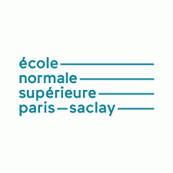
Role in project
- Record the NV spin resonance under high pressure at both room- and low-temperature, by adaptation of an Attocube cryostat equipped with a superconducting vector magnet (WP5).
- Perform optical spectroscopy of the NV Centre investigated under high strain conditions, at both room temperature and cryogenic temperature, to develop a fundamental understanding of the effect of strain of the NV optical and spin properties (WP5).
- Use a dedicated FIB machine to create NV centres in diamond anvils by ion implantation and optimize their luminescence collection efficiency in realistic conditions associated to a diamond anvil cell environment(WP5).
- Characterize the NV Centre doping in overgrown layers on a single-crystal substrate with a millimeter size (WP2). The optimized sample hosting NV centres at a controllable depth will then be cut and polished into the Boehler-Almax anvil geometry. The goal is to integrate these anvils into a diamond anvil cell that can be operated above 100 GPa (WP5).
- Use the NV magnetic sensitivity to probe the magnetic and superconducting properties of iron and various hydrogen-rich compounds (WP7).
-
Key Personnel
Jean-François Roch, Professor at ENS PS
NVISION IMAGING TECHNOLOGIES GMBH
Partner presentation
NVision is a spinoff startup from the renowned institutes of Theoretical Physics (director: Prof. Martin Plenio) and Quantum Optics (director: Prof. Fedor Jelezko) in the University of Ulm, Germany. NVision is a young innovative company that combines the skills of business entrepreneurs, product developers and world-leading scientists.
Together NVision leverages the unique know-how and IP accumulated at Ulm University to become a front-runner in the development and commercialization of novel imaging and sensing applications. Its mission is to translate ground breaking quantum technology into new gold standards in molecular imaging and diagnostics. NVision believes in value driven R&D of truly differentiated-revolutionary products. NVision strives to be an exemplar of academic-startup spinoff by bringing together the best of the two worlds: the boldness, creativity and interdisciplinarity of academia with the focus, agility and discipline of a hungry start-up. A key development in quantum technologies has been the discovery of the unique quantum properties of individual nitrogen-vacancy defects (NV centres) in diamonds. NVision applies these remarkable features for revolutionizing sensing and imaging applications.
Role in project
NVision’s goal is to exploit the expertise in theoretical and experimental nanoscale NMR spectroscopy, which it has demonstrated over the past decade, for the translation of our proof-of-concept experiments into a working demonstrator (WP 4), which can then be employed for studying biologically relevant molecules and proteins (WP6).
Despite NVision’s own expertise, building such nanoscale NMR spectrometer we rely on continuing research in improvements in coherent spin control techniques. All these aspects are improved by world leading partners in the consortium.
Apart pure scientific research many common engineering tasks have been identified in this consortium allowing for synergy effects. With NVision’s strong background in NV diamond-based quantum metrology we provide a shortcut for consortium’s advancements in pure science into commercial products.
Key Personnel
Philipp Neumann, VP of Research at NVision Imaging Technologies
Ilai Schwartz, CTO and co-funder at NVision Imaging Technologies
SQUTEC
Partner presentation
SQUTEC is a spin-off company from Stuttgart University. The company capitalizes on the production of bulk diamond magnetometers with customers in oil and gas exploration industry, sensor development and mechanical as well as electronic engineering. Specifically, the company has developed two different types of stand-alone magnetometers with varying specification. Both instruments are the only one on the market so far. In addition, the company build characterisation equipment for material scientists and companies. SQUTEC is a GmbH with an annual turnover is 0.7 M€. The company has 4 employees with Dr. P. Heinke being the CEO and Dr. A. Denisenko the CTO.

Role in project
SQUTEC develops an endoscopic diamond-based magnetometer for remote probing of magnetic fields. The company brings in its expertise in custom made magnetometers and integrated control electronics. The endoscopic system addresses a new area of application, namely remote probing of magnetic fields for testing technical devices, including microelectronic and medical application. The project is based on the company’s expertise in developing integrated optics optimized for light extractions from high refractive index materials. SQUTEC brings in its expertise on integrated high-power low noise light sources and microwave electronics. Specifically, SQUTEC cooperates with the integrated device fabrication at BOSCH in terms of developing light filters and waveguide optics. The project capitalizes on the WP1, specifically on the development of microwave-free detection sequences as well as WP2, the development of materials. In the frame of WP3, SQUTEC intends to increase the DC sensitivity of the magnetometer high quality, strain-free material is of paramount importance.
Key Personnel
Andrej Denisenko, Dr.-Ing., Senior scientist
FORSCHUNGSZENTRUM
Partner presentation
Forschungszentrum Jülich pursues cutting-edge interdisciplinary research on pressing issues facing society today. With its competence in materials science and simulation, and its expertise in physics, nanotechnology, and information technology, as well as in the biosciences and brain research, Jülich is developing the basis for the key technologies of tomorrow. In this way, Forschungszentrum Jülich helps to solve the grand challenges facing society in the fields of energy and the environment as well as information and the brain. Forschungszentrum Jülich is also breaking new ground in the form of strategic partnerships with universities, research institutions, and industry in Germany and abroad. With more than 5,500 employees, Jülich – a member of the Helmholtz Association – is one of the large interdisciplinary research centres in Europe.
Role in project
The group is responsible for theoretical and numerical study and development of optimal control methods to overcome technical challenges of deploying quantum coherent manipulations of single spins in diamond in the presence of realistic environmental condition by providing an “easy-to-implement” control software for automatic performance improvements of quantum sensing. The group is primarily involved in WP1 (Theory and Protocol) and provides additional support to other WPs (WP4 and WP6).
Key Personnel
Prof. Dr. Tommaso Calarco, Director of the Peter Grünberg Institute 8 (PGI-8) at Forschungszentrum Jülich, Scientific member of the “High Level Steering Committee for the Quantum Technologies Flagship”
